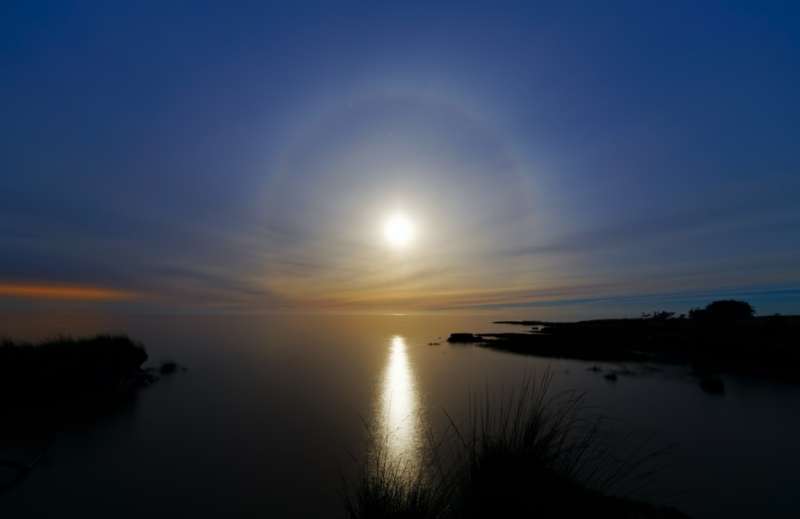Credit & Copyright: Luis Argerich
Explanation:
A Full Perigee Moon
rose as the Sun set last Sunday.
At its closest to Earth it was, by just a bit,
the year's brightest and largest Full Moon
also known as a Super Moon.
Seen from Punta Piedras, Argentina and the mouth of the Rio de La Plata,
near Buenos Aires,
the Super Moon's light created this magnificent
circular lunar
halo.
Still, the size of a lunar halo is determined by the geometry
of six sided water ice crystals in planet Earth's high, thin clouds.
The crystals
deflect the rays
of moonlight more strongly through a minimum angle of 22 degrees.
So this halo has an inner radius of 22 degrees, just like the halos
of the less-than-super moons.
Even more common than a Super Moon, beautiful 22 degree
halos can be spotted at any time of year.
1999 2000 2001 2002 2003 2004 2005 2006 2007 2008 2009 2010 2011 2012 2013 2014 2015 2016 2017 2018 2019 2020 2021 2022 2023 2024 2025 |
Yanvar' Fevral' Mart Aprel' Mai Iyun' Iyul' Avgust Sentyabr' Oktyabr' Noyabr' Dekabr' |
NASA Web Site Statements, Warnings, and Disclaimers
NASA Official: Jay Norris. Specific rights apply.
A service of: LHEA at NASA / GSFC
& Michigan Tech. U.
|
Publikacii s klyuchevymi slovami:
Moon - perigee - Luna - perigei - galo
Publikacii so slovami: Moon - perigee - Luna - perigei - galo | |
Sm. takzhe:
Vse publikacii na tu zhe temu >> | |
